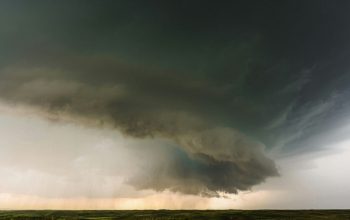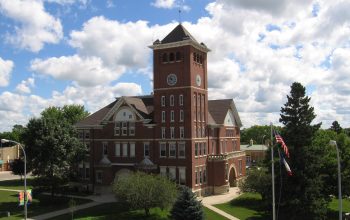The spirit of volunteerism and community service is alive and well in the Clarion-Goldfield-Dows schools. Most people are familiar with the Peer Helper program that many C-G-D middle schoolers are involved in, through which students get the opportunity to engage in community service. Until recently, no similar programs really existed as students moved on to high school. However, this school year, a new program was instituted for freshmen through seniors that allows them to help others and give of themselves.
C-G-D High School Principal Sheila Hudson, who instituted the program at the beginning of the 2019 school year, explained what the Silver Cord program entails. She notes, “It is a distinguished service award available to high school students.” Hudson adds that to receive the award, students need to accumulate 300 hours of community volunteer service from the start of their freshmen year through May 1 of their graduating year. Since the program just started this year, service hours are pro-rated for the first few years, meaning that seniors this year may receive the award for completing 75 hours of service.
To keep track of service hours and prove they have been completed, students document their activity and submit forms. They have a supervisor at the activity sign for them and then turn a paper back into the school office. After completing the required hours, students earn an actual silver cord to wear on their robes at graduation that they will receive at the senior awards program.
However, Hudson emphasizes that the program is about so much more than a tangible award. “It’s about the journey not the reward. The act of volunteering is more important than the actual cord,” she says. C-G-D students taking part in the program seem to agree with their principal. Junior Ashtyn DeCoster says, “You don’t realize all you can do in your own community until you start volunteering. We really can impact our community and churches.”
Students can engage in many different types of activities to earn their Silver Cord hours. They can volunteer at their churches, through school activities and with other groups. Sophomore Brooke Askelsen said she earned hours helping with bible school and working at softball tournaments. She also took part in the student council’s “Rake and Run” event last November where the group raked lawns around town for those unable to do it themselves.
Askelsen added that as a former Peer Helper in middle school, she was happy that Silver Cord was started in the high school. She noted that she enjoyed volunteering and service, but there wasn’t really an organized outlet to do that for older students. Askelsen also explained that since Silver Cord isn’t an organized group, she enjoys that she gets to find her own service opportunities and has more choice about them.
Besides the actual cord, Principal Hudson also pointed out various additional benefits the program offers. Students can gain self-confidence and citizenship skills. They get an opportunity to work with different community groups and gain connections. She adds that the program “helps present positive images of teenagers to the local community.” It also does not hurt that students will be able to include their service activities on college and scholarship applications.
Even though the program just started this year, all involved feel like it’s off to a strong start. While she doesn’t have the exact participation numbers since not all documentation has been turned in, Hudson said, “I would say a good chunk of students are working toward Silver Cord, including the majority of the seniors.” Both DeCoster and Askelsen said they’ve already come close to completing 75 hours for the year but still look forward to finding more activities to participate in.
In fact, both Hudson and the students said they are on the lookout for more service opportunities. Hudson noted that individuals and organizations can contact the school if they have a service project or activity that students could participate in.
The principal is very optimistic about the future of Silver Cord and the prospects it will provide for students and the community. “Hopefully, this program has a snowball effect,” Hudson says. “It started small, but it keeps growing and growing. We really can’t wait to see where it goes.”


